(ATP Editor’s Note: The ATP Quiz yesterday was a teaser post as a curtain raiser for this pictorial gem. Yes, as many people guessed, that picture was of Government College (now University) Lahore; and it was taken, like the pictures in this post, by Umar Ashraf Riaz)
Recently I took my son Umar flying in a Cessna. Umar stayed very busy with his camera, trying to make the most of it despite the usual smoggy winter haze over Lahore. Here is a pictorial essay built around some wonderful aerial photographs of Lahore and its surroundings taken by Umar (click on the pictures to magnify).
The Cessna 172 RG emerges from its hangar at Walton, Lahore’s smaller general aviation airport. After taking off we set a west-north-westerly course for Sheikhupura.For the return leg the scenic route was taken covering some of Lahore’s historic sights.
The picture above shows the view on climb-out from Walton’s runway; the inverted ‘U’ is the popular Liberty Market in Gulberg.
Under the takeoff path, from right: the famous Gaddafi cricket stadium; like a square, layered cake the Alhamra Art Gallery; the Alhamra amphiteatre – also houses a small 300 seat theater in the basement where I have spent many a happy evening acting in and directing amateur theatricals.
Foreground: Hockey and athletics stadia. Background, left: the grounds of Forman Christian College set up in 1865, named after Dr Charles Forman an American Protestant missionary who settled in Lahore in 1849. The college was nationalized in by the government of the late Prime Minister Z. A. Bhutto in 1972, staying under government control until 2003 when it was returned to its former owners, the Presbyterian Church (USA) in 2003.
Passing over Ichhra en route to Sheikhupura. While this old locality of Lahore forms an interesting mosaic, the quaint, higgledy piggledy, crowded construction and crooked streets indicate that town planners clearly passed the area by. A raging fire here would be a nightmare. Spiky towers are mosque minarets or mobile phone antennae. (Viewing this picture in larger resolution is highly recommended: here).
Under visual flight rules the pilot has to be in sight of the ground at all times. Getting to Sheikhupura is very simple – no compass or map, just pick up and follow the prominent Lahore-Sheikhupura highway after crossing the Ravi, taking in sights like this Dawood-Hercules fertilizer plant on the way.
Sheikhupura Fort. Built at the center of a dense forest in 1607 on the orders of Jahangir, the Mughal emperor of India, father of Shah Jehan who built the Taj Mahal. Initially called Jahangirpura, the town, later named Sheikhupura after Jahangir’s nickname ‘Sheikhu’, was a hunting retreat for the emperor who came here frequently from Lahore to relax. Interestingly, Alexander the Great fought one of his fiercest battles in the vicinity of Sheikhupura around 100 BC.
Hiran Minar (‘Deer Tower’), built by Emperor Jahangir as a monument to Mansraj his favourite pet deer. A remarkable structure with many features, some being added after Jahangir’s death by his son and successor the Emperor Shah Jehan.
Between taking these photographs, Umar had a turn at the controls… with the inevitable beginner’s white-knuckled grip and frozen dropped-jaw! He didn’t do too badly for a first-timer though, after the initial bobbing and weaving about the sky while I put my seat all the way back to take this picture.
Close to sunset we flew past the jewel in the crown of mosques the world over, Lahore’s Badshahi (Kingly) Masjid. Clad in red sandstone this breathtakingly beautiful mosque was built in 1673 by the Mughal emperor Aurangzeb Alamgir, grandson of Jahangir and son of Shah Jehan.
Opposite the mosque the white structure is Alamgiri Gate, the main entrance to Lahore’s historic Shahi Qila (Royal Fort). Structures behind the gate within the fort’s massive walls were royal quarters for various Mughal emperors. According to excavations and historical references the origins of Shahi Qila date back to before 1000 AD. Most of the existing structures were built in the reign of the Mughal emperor Akbar (‘Akbar the Great’) between 1550-1600 AD. The Qila formed the second line of defense for Lahore against armies invading from the north; the first was the river Ravi which flowed by the Qila’s ramparts at the time but later gradually shifted its course a few miles to the left.
The densely packed houses to the right of the Fort and Mosque form Lahore’s famous Walled City, the original Lahore dating back over 2000 years.
The small white domed structure by the top left corner of the mosque is the monument to Ranjit Singh, the Sikh emperor who ruled the Punjab for nearly 40 years until his death in 1839.
The dual carriageway to the the left of the mosque is part of the famous highway built by Emperor Shershah Suri in the 16th century. Stretching incredibly from Calcutta in the eastern end of India to Kabul, Afghanistan, the Sarak e Azam (Great Road) as it was originally named, was re-named the Grand Trunk Road by the British during their rule over India. Still called GT Road it is the primary roadway for traffic from Lahore to the north.
The pink structure in the foreground with the tall tower and a playing field is Lahore’s famous Government College, now Government College University. Established in 1864, ‘GC’ as it is popularly called soon became and continues to be one of the foremost centers of education in Pakistan.
The square structure next to the college building is the Quadrangle, the male students’ hostel where noted luminaries like nobel laureate Dr. Abdus Salam and Pakistan’s national poet Allama Iqbal lived as students. Other buildings within the grounds to the right and left were added later.
Pater et fils, back to terra firma….!!!
Naveed Riaz is an avid aviator. All photographs, except one, are by his son Umar Ashraf Riaz.
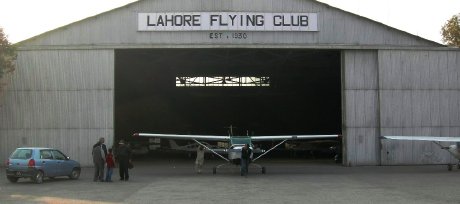
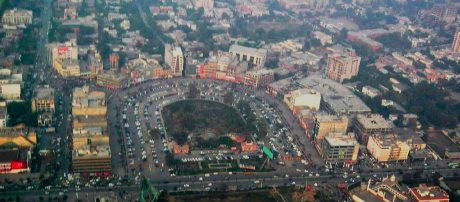
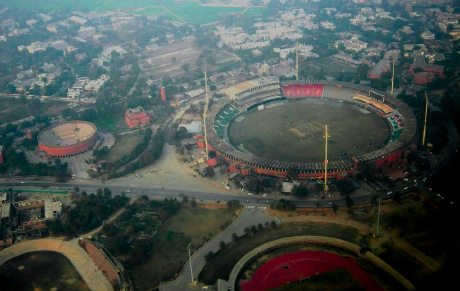
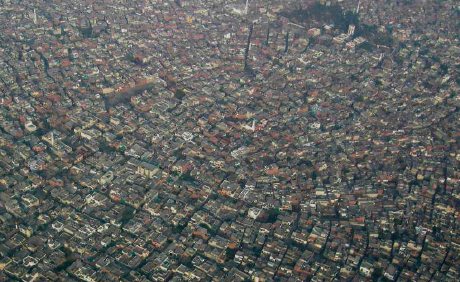
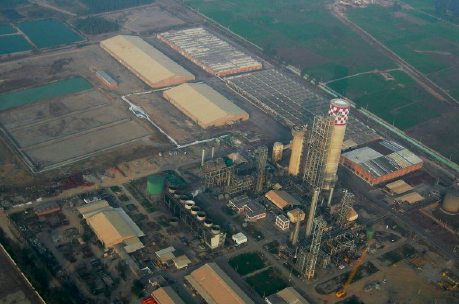
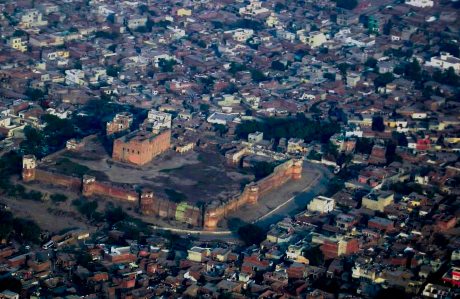
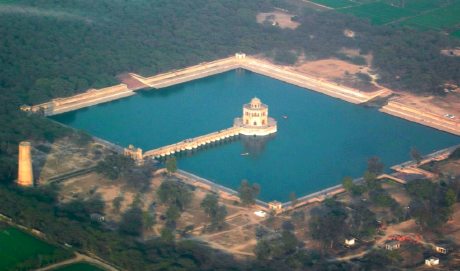
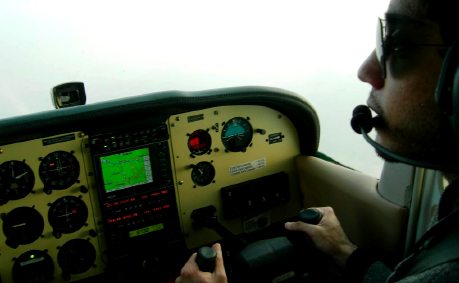
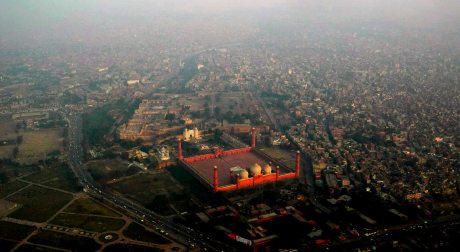

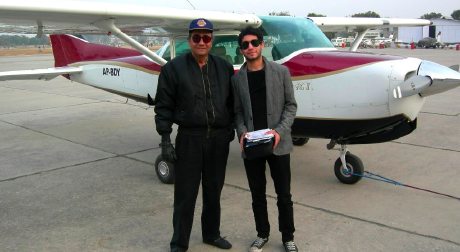

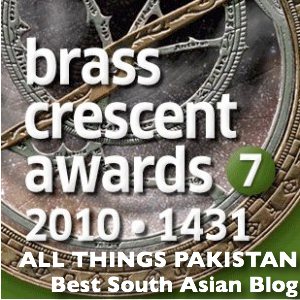

















































seeing this in 2023 feels so nostalgic
I had missed this post earlier for some reason. It is a wonderful collection and I hope there will be more.
Indeed this is Lahore like I have never seen it. Thank you for sharing.
I also did my flying from Lahore flying club in 76-77 and as M S Akhtar says it really brings back some great memories. Lahore is still a paradise except for a few ugly new buildings(eyesores) & diminishing green areas and parks(Doongi ground M M Alam Rd). Thanks to land mafia & unscruplous politician’s support(Chorry Prrvez/Moooonis). Though dangerous and NOT recommended,i also used to do beatups over Ravi,fields canals & during evenings over the KC(favourite spot).I and a friend now dead(Gilgit F-27 crash) were reported and reprimanded(by ATC) one winter evening. This here is some very nice ariel photograps of Lahore.
I started flying from Walton in March 1968 in AP-AHN. The photos did bring back the memories; but Lahore of yesteryears was a paradise. I used to do beat-ups over the famous river. Last year when I was there, if I wanted to I could have waded acroos the river to Kamran’s Bara-daree. I also visited the bards tomb; a change of guard was taking place and there were at least 200 male and female addicts. The beauty of Lahore is confined within the walls of the rich and afluents. At the end of my visit to my past homeland I even took fotos of rubbish dumps; they also looked beautiful.